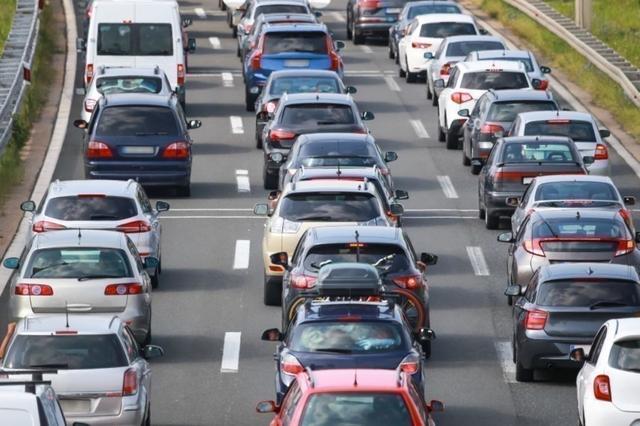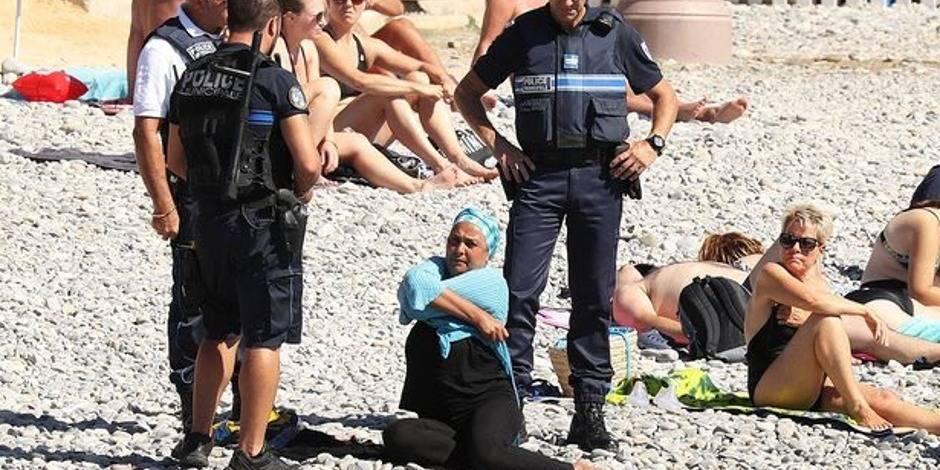Departures on vacation: how do traffic jams form on the road?
Among the many summer memories, there are, depending on the desires and the years, the sea, the mountains... but also the traffic jams. Why is it impossible to move forward, except intermittently, when no toll appears on the horizon, nor even an accident?
Traffic jams have many economic, social, logistical, health and ecological consequences. In August 2010, a traffic jam in Beijing of about 100 kilometers lasted 12 days, caused by trucks bringing material for work on the G110 highway. A study by a research institute and an American traffic information company showed in 2013 that traffic jams cost the French economy 5.9 billion euros each year. In addition, a traffic jam is a major source of air pollution.
How does a traffic jam form? How to avoid it? What can science do about this problem?
A "butterfly effect"
In the case of dense road traffic, when a motorist changes lane, the vehicle following him must brake and this wave (or wave) of braking spreads little by little and gradually.
If the first vehicle has reduced its speed by 10%, the tenth vehicle will have reduced its speed by at least 20% for safety reasons (maintaining the braking distance), but also as a preservation reflex. So that after several kilometres, a traffic jam will inevitably form. This phenomenon is called "butterfly effect" or "caterpillar effect": a small cause causes a much larger reaction at the end of the chain.
If the first vehicles to have slowed down are only slightly impacted by the traffic jam being created and quickly regain their cruising speed, it will take a certain period of time for those located downstream before managing to get out of this situation. This is the very definition of accordion bottling.
This change of lane mentioned is only one example among others which may explain the creation of a traffic jam for no apparent reason. Different driving modes from one individual to another, vehicle insertion routes, or quite simply the effect of curiosity can lead to traffic disruptions.
Read also
An analogy to understand the phenomenon…

To study “car plugs”, we actually use models from fluid mechanics or physics of granular media, because the versatility of physical models is such that the same equation can be used to model phenomena that are a priori different.
The flow of cars can be imagined as liquid flowing through a pipe, or balls rolling through a conduit. If one of the balls undergoes a slowing down at a point of the conduit, this affects all the balls downstream; the disturbance propagates backwards, exactly like a wave. This is what happens in traffic jams.
The traffic and the reaction of the drivers involved
How does this slowdown form, spread and amplify? We must turn to mathematical models derived from mechanics to answer them. Here, we use stable parameters to model the system, for example the authorized speed, the speed at which a traffic jam propagates, the maximum number of cars that the lane can accommodate.
To reproduce the phenomenon of traffic jams satisfactorily, the key factors are the initial fluidity of traffic, the tendency of drivers to “overreact” and the tendency of drivers to react late.
Read also
Regulate your behavior
Counterintuitively, vehicle speed and traffic density have virtually no effect, except in borderline cases. The system can quickly degenerate: a very slight disturbance has repercussions on the whole system. This disturbance can be a nervous driver, too tight a turn, an anomaly on the road, etc. A single driver can create a jam (or clear it, but that never happens, because a driver coming out of a jam tends to accelerate too much).
Conclusion: it is absolutely necessary to avoid, as far as possible, reacting too strongly or worse, stopping completely. It is better to drive at 1 km/h than to have to immobilize the vehicle. By doing this, the amplitude of the wave is reduced and its wavelength is increased, the first stage of its attenuation. Another recommendation: equip cars with regulators specially adapted to slow traffic conditions.
Why they are inevitable
During major holiday departures, traffic jams are unavoidable. Motorways are only capable of absorbing a certain number of vehicles per hour. Beyond a certain flow, the fluidity of traffic decreases until it comes to a complete stop.
Can we predict traffic jams? Alas no ! The visualization of waves in real time and on a large scale is almost impossible... Moreover, if the movement of fluids, governed by physical laws, is quite "stable", human behavior remains unpredictable.
Read also
We can minimize them
So, to regulate the traffic we can act on certain parameters. For example, play on the maximum authorized speed, even on an ad hoc basis. On an axis with several access points, traffic lights can be installed to vary the density of new arrivals. In addition, common sense might suggest adding routes. But it's not that simple: in Stuttgart at the end of the 1960s, major works to extend the road network had created huge traffic jams, resulting in the closure of the brand new section.
Science has even proven that an expressway can reduce the average speed of traffic. This is the “Braess paradox” developed by the eponymous mathematician. In essence: if the city decides to build a new road (let's call it A) significantly faster than the existing ones (named B and C), all motorists will opt for solution A. A traffic jam forms and in the end, drivers take longer to take A than to split between lanes B and C. His theory has since been confirmed. In 1990, the municipality of New York closes 42nd street: traffic in Manhattan becomes more fluid. In Seoul, the destruction of an expressway has improved overall traffic.
Read also
Some recommendations to take
In fact, motorists behave selfishly, and are constantly subject to a conflict between individual interest and collective interest.
So, let's remember the scientific recommendations to avoid traffic jams:
Biomimicry and traffic jams
As we have seen, traffic jams are linked to too high a concentration of people circulating in the same space. However, the movements of large colonies of ants do not encounter this problem.
Indeed, in ants, when the density increases, the flow increases and then becomes constant, unlike human beings who, beyond a certain density threshold, slow down until there is no flow and cause a traffic jam. If the density is too high, the ants no longer enter the road, they wait. The choice is conditioned by the continuous adaptation to these “tacit” rules of movement. Car traffic, on the other hand, follows imposed rules, such as stopping at a red light, regardless of the traffic.
Intelligent transport systems can be influenced by the permanent adaptability of ants. Autonomous driving would take up the challenge of fluidity on the roads, could make traffic more homogeneous, reduce human errors of judgment and make it possible to optimize journey times according to traffic.
Waleed Mouhali, Teacher-Researcher in Physics, ECE Paris
This article is republished from The Conversation under a Creative Commons license. Read the original article.
Was this article helpful to you? Note that you can follow Actu in the My Actu space. In one click, after registration, you will find all the news of your favorite cities and brands.
Share








